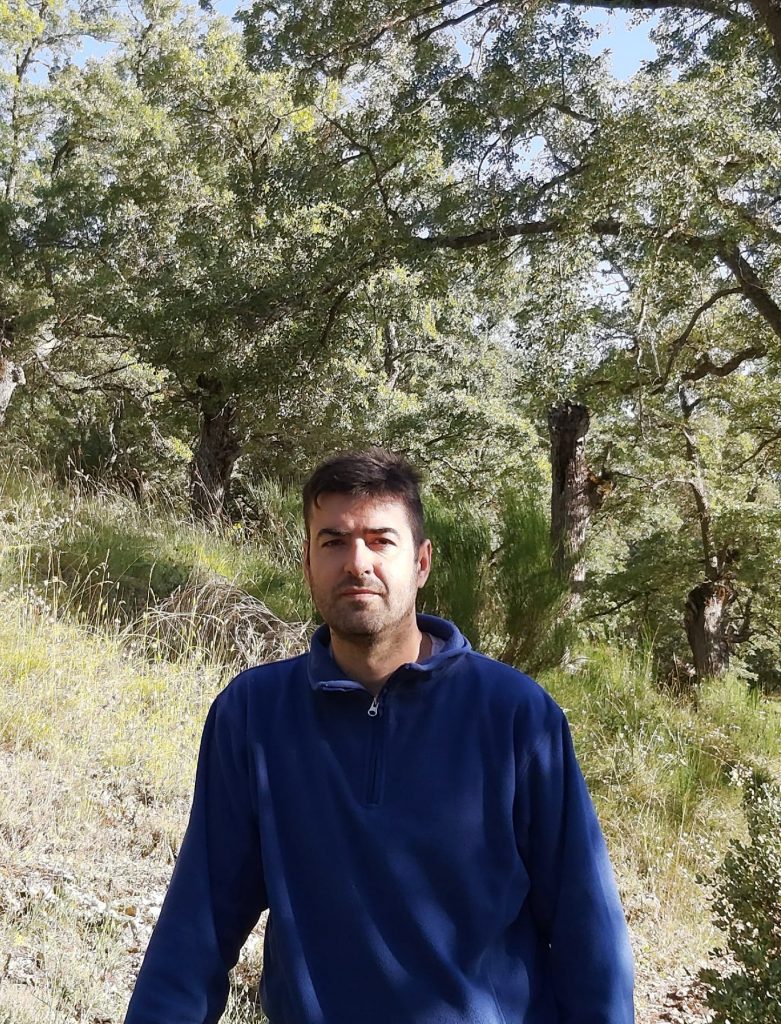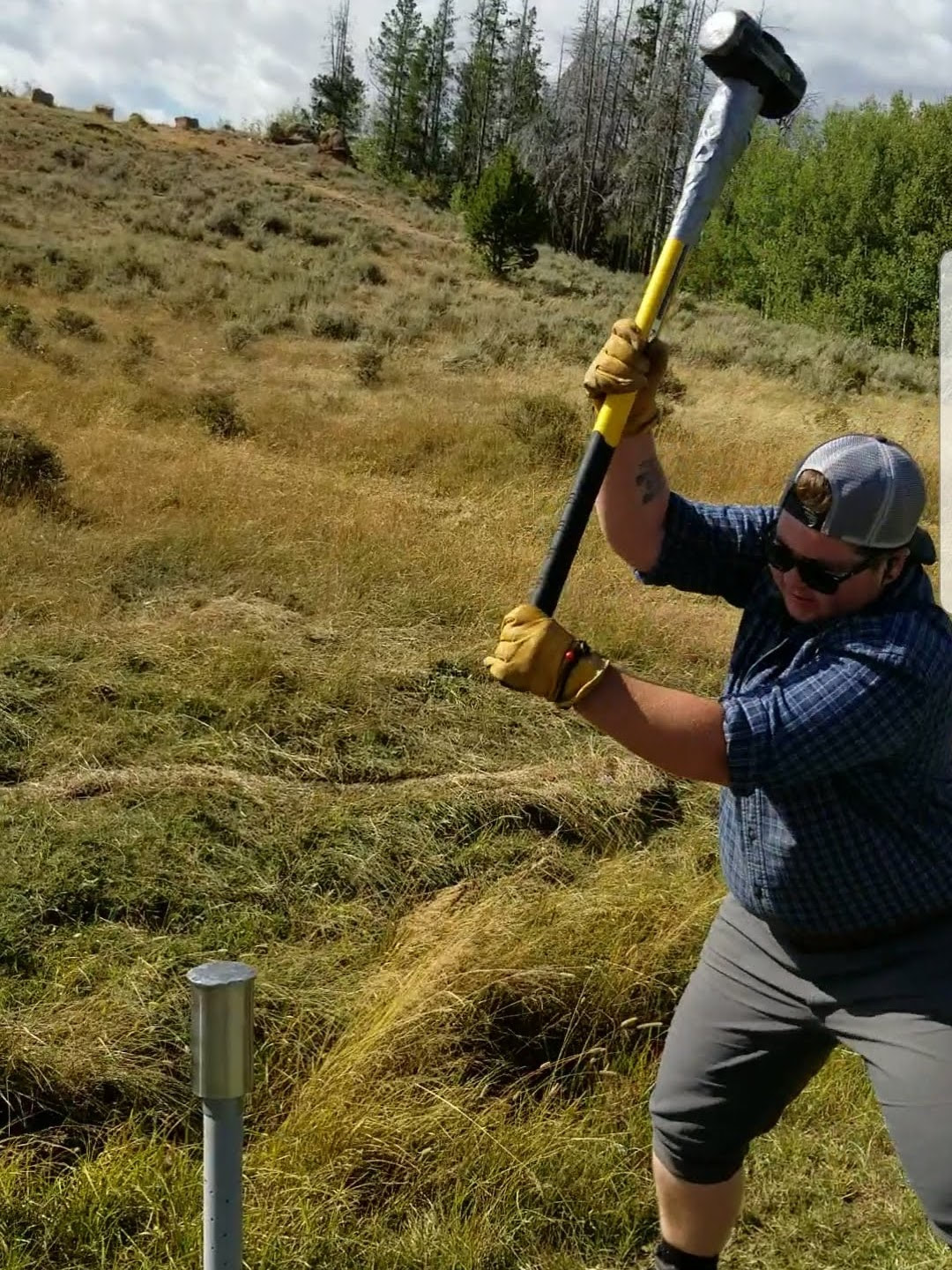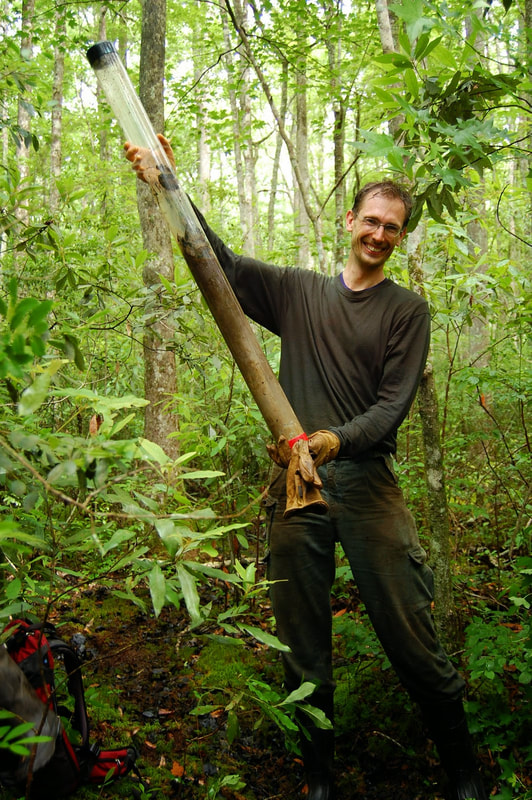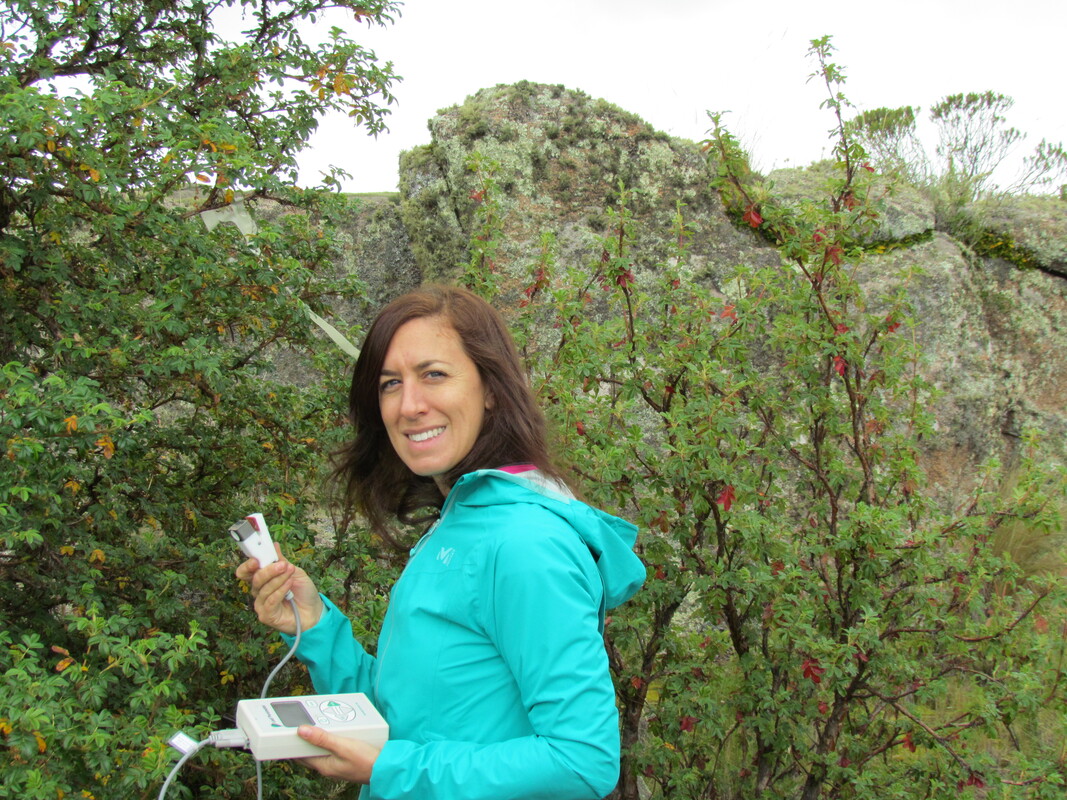When I think of ecohydrology, many different effects and functions come to my mind. Initially, ecohydrology is related to the effects of hydrological processes on the distribution, structure, and function of ecosystems. And more in detail to forest ecosystems, in which I work. Secondly, I also consider the effects of living parts of ecosystems on water cycle and water movement among atmosphere, lithosphere, hydrosphere and biosphere.
What are your undergraduate and graduate degrees in?
My BS is in forestry from the Castilla La Mancha University (Spain) and my MS is in forestry science from Lleida University (Spain). My PhD is in two joint programs: the first in Economy and Social Science from Polytechnic University of Valencia (Spain) and the second in Forestry from Castilla La Mancha University. I also spent one postdoc year in UTAD (Portugal).
How did you arrive at working in/thinking about ecohydrology?
Since 2005, I have been working on different research projects and teaching activities related to forest management and soil hydrology at Castilla La Mancha University (Spain). I developed my doctoral thesis in Cuenca Mountains working on Spanish black pine (Pinus nigra Arn. ssp salzmannii) natural regeneration and sustainable forest management. After this period studying and reading very interesting papers, I started to think about and work on how forest management may influence water cycle in Mediterranean mountain areas. It is well known how and to what extent the hydrology of the Mediterranean forests strictly depends on infiltration capacity and surface conditions of soils. These features are clearly driven first by the soil characteristics (e.g., texture and organic matter, but also the interactions of soil characteristics with plant composition can play a significant role. Nowadays, I am focusing on the effects of forest stand composition and soil properties on water repellency and hydraulic conductivity in Mediterranean forests, among others (including wildfire affected areas and soil hydrology).
What do you see as an important emerging area of ecohydrology?
Overall, I think we need to advance efforts to identify differences among key parameters driving the hydrological response of Mediterranean forests according to their biodiversity and soil characteristics. More research is certainly needed, in particular about litter quality (only indirectly considered in this study within the physico-chemical and covers of forest soils) and its feedback with water repellency, since litter quality certainly may influence forest hydrology.
Do you have a favorite ecohydrology paper? Describe/explain.
I have read many interesting papers and there are many important pieces of work, which all together generate a valuable and attractive ecohydrology science. Talking about one of my favorites, I would like to mention the one presented by John T Van Stan and others in 2020 (Springer, Cham. https://doi.org/10.1007/978-3-030-29702-2_14). It is titled as “Precipitation Partitioning—Hydrologic Highways Between Microbial Communities of the Plant Microbiome?” This book describes all important water cycle processes in vegetated ecosystems including interception, throughfall, and stemflow and how all these processes may connect microbial communities from the atmospheric boundary layer to the bedrock face via hydrologic ways.
What do you do for fun (apart from ecohydrology)?
Being at the forest close to the wild and trees are the things I love the most. Life and happiness are about sharing special moments with friends and family in the middle of nature.




 RSS Feed
RSS Feed